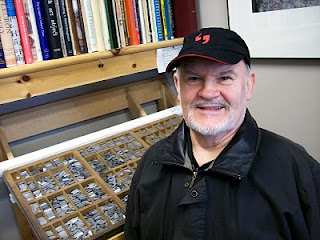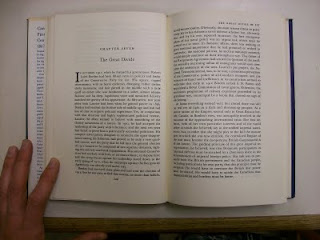

Okay, well the only typographical element in these images is the street number on the house – Bruce Roger’s Centaur which I cut in pine with a scroll saw. Click on the photo to see an enlargement.
Speaking of American types, I’ve always had a soft spot for the work of Frederic Goudy (1865–1947), most of which was issued by the Lanston Monotype company. There’s something warm and lyrical about many of his designs. When I went back and looked at many of the illustrated books I had read in my childhood, I was surprised to discover that my favourites had more often than not been set in one of Goudy’s many types. I suppose that makes Goudy’s letters my typographic comfort food.

One of the best examples of this is a copy of Richard Scarry’s The Animals’ Merry Christmas, which I still own. Originally published in 1950, it marries one of Goudy’s types with Scarry’s colour illustrations. My copy is a forth printing, given to my family one Christmas by a Great Aunt living far away in London, Ontario. Perhaps the excitement of reading these stories in the days leading up to Christmas as a child has become mixed up with my adult response to the typeface.

the Canadian type designer Jim Rimmer also loves Goudy. His Amethyst typeface is very much in the spirit of Goudy, and he has digitized a number of Goudy’s metal types. Both Amethyst and Rimmer’s revision of Garamont (which Goudy based on a type by Jean Jannon) are employed with some frequency at Gaspereau. Now that I think of it, Rimmer issued a letterpress edition of Dicken’s A Christmas Carol in 1998, set in Lanston's Caslon 337 with Goudy's own Lombardic initials and Goudy Text for display. It is illustrated with Rimmer’s trademark colour linocuts.

Maybe there is something about Goudy that is inherently Christmassy afterall.
ANDREW STEEVES ¶ PRINTER & PUBLISHER















































